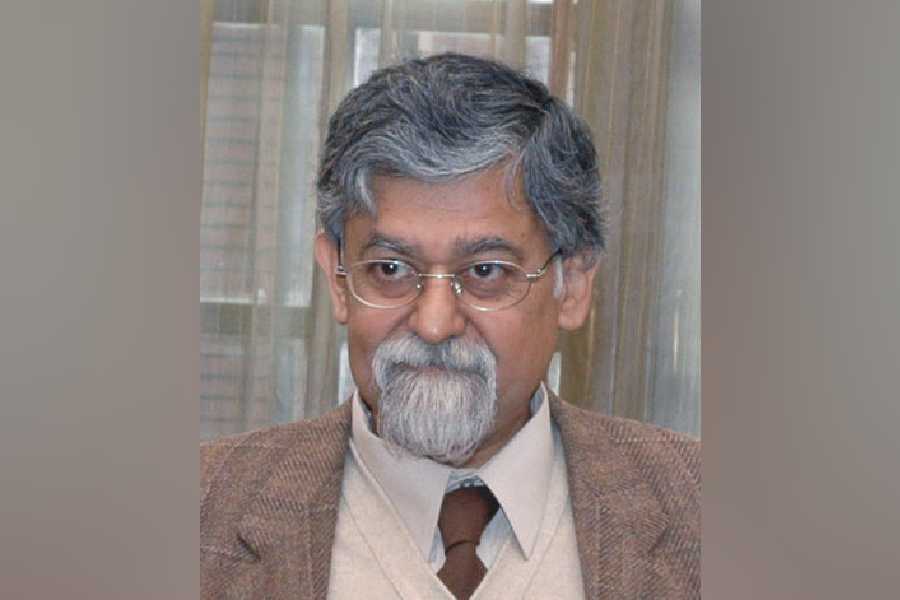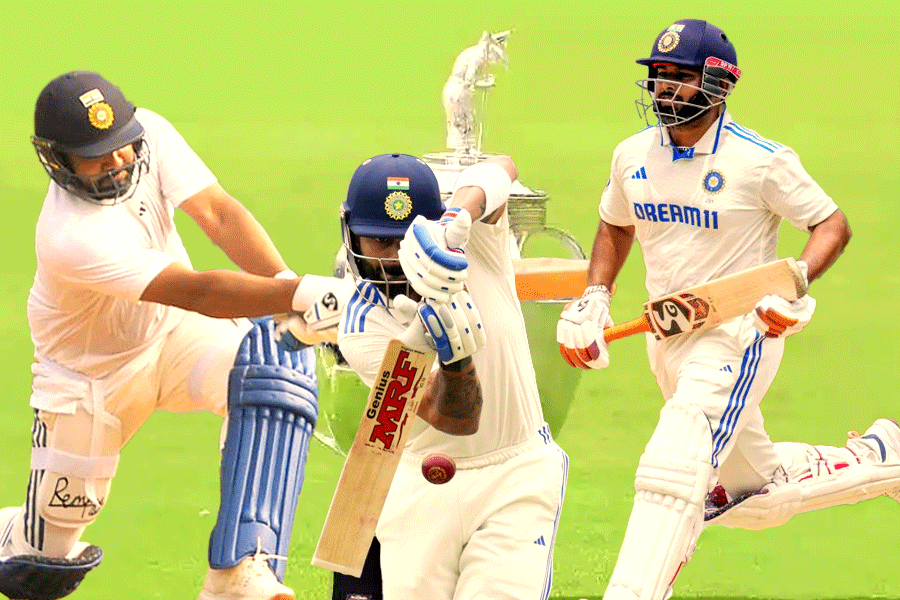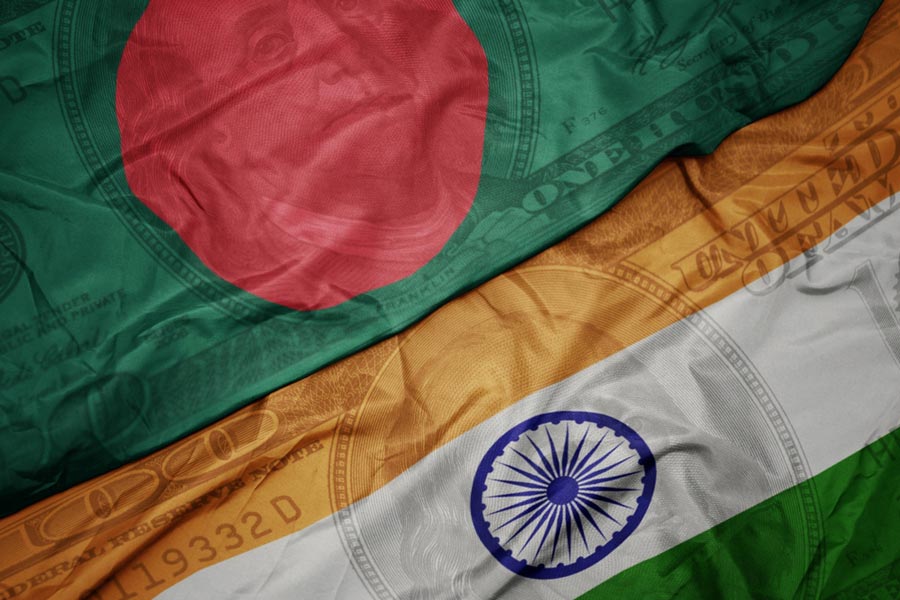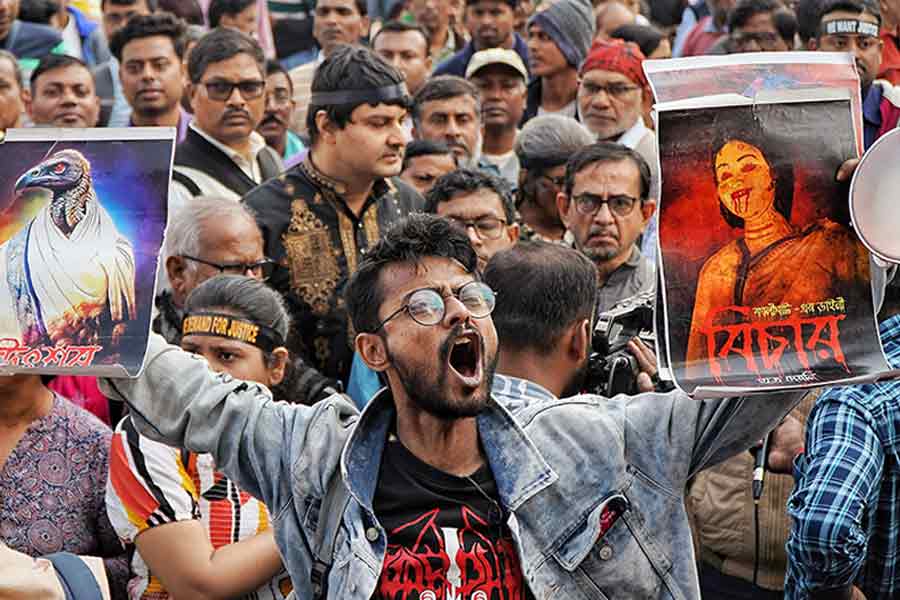Director-scriptwriter Abhijit Chowdhury’s film Dhrubor Aschorjo Jibon is a cinematic journey that delves deep into the intricacies of human existence, morality, and the profound impact of art on our lives. Structured into four chapters, each imbued with its own thematic resonance, the film weaves together the narrative threads of crime, love, betrayal, and redemption against the backdrop of Bengal’s rich artistic heritage. A t2 chat with Abhijit.
What is the genesis of the film?
A few years ago, as the pandemic raged on, I witnessed how quickly people’s lives could be turned upside down — sometimes within a matter of days. Who lived and who died seemed to hang on a flip of the coin. That’s when I began writing a story exploring how a man’s life can unfold in different directions with just a few small twists of fate. We’ve all had that moment when we wish we could go back in time, make a different choice, right a wrong, or perhaps take a completely different path in hopes of changing the course of our lives. Alongside this narrative, I found myself searching for deeper subtexts and metaphors.
Then, my co-writer, Alekhya Talapatra, shared a story about Jamini Roy, and I was immediately captivated. Together, we developed four chapters, each paying tribute to a different artist from the Bengal School of Art. I pitched the story to my producers, Nilarun Basu and Kalyan Sundar Gayen, and they both loved it. And thus Dhrubo was born!
Why this title?
As we journey through life, age slowly unveils its hidden beauty, revealing how each moment and every decision carves a new path. The beginning and end of life may be inevitable, yet the space between is shrouded in mystery, unpredictable and ever-shifting. It’s in these moments of uncertainty that we truly live, and in Dhrubor Aschorjo Jibon (The Strange Life of Dhrubo), we explore the strange dance of fate and choice.
What Dhrubo experiences on screen is not so different from the quiet, unspoken moments we all encounter — somewhere between conscious decisions and the forces that shape us unknowingly. The title itself captures this tension: a life that is at once ordinary and extraordinary, strange yet familiar, full of twists we can neither foresee nor control.
Who plays who?
Rishav Basu plays the title character Dhrubo, Ritwika Pal plays Rimi, Korak Samanta plays Dhrubo’s friend Nandi, Badshah Moitra plays Rimi’s father, Anandarupa Chakraborty plays Firoza, Judhajit Sarkar plays a businessman and Sudip Mukherjee plays an IB officer.
Why select Jamini Roy, Gaganendranath Tagore, Bikash Bhattacharya, and Benode Behari Mukherjee as thematic anchors?
These four artists are unique in their own ways, and though often underrated, they made immense contributions to Indian art. Jamini Roy abandoned Western academic art to embrace indigenous Indian styles, particularly Pattachitra, a traditional scroll-painting technique from Odisha. He became a master of this art form and sought to make his work accessible to the common people, selling his paintings at prices far below those of his contemporaries. His deep connection with folk traditions set him apart as a revolutionary in Indian art.
Gaganendranath Tagore was one of India’s pioneering political cartoonists, using his art to fearlessly criticise British imperialism, the political system, and the caste structure. His bold satire, through caricatures and illustrations, was instrumental in expressing nationalist sentiments. Beyond cartoons, Gaganendranath made significant contributions to theatre, working on set design and costumes, and blending his visual art with dramatic expression.
Bikash Bhattacharya, one of my favourite artists since childhood, had impressive versatility in his art. He explored a broad range of styles throughout his career, but some of his most memorable works dive into the theme of social horror, depicting the darker, often uncomfortable realities of life. This exploration of societal themes inspired elements in our film, where we attempted to capture some of that same emotional depth.
Benode Behari Mukherjee was known for his murals and scroll paintings, which often depicted the spiritual and cultural landscapes of India. Despite losing his vision in his later years, he continued to create remarkable works, using his deep understanding of form and composition to guide his hands. One of his former students, Satyajit Ray, captured his extraordinary journey in the documentary The Inner Eye. In this film, Benode Behari explained how an artist develops an “inner eye” — the ability to create without relying on sight. This concept, of art transcending physical limitations, became an important theme we explored in the film.
What was your takeaway from the film?
My takeaway from this experience is one of immense artistic fulfilment. As audiences are now watching the film and connecting with it; the love and energy we poured into it are coming back to us twofold. There’s nothing more a storyteller could ask for.
Recently, our film won the Best Director award at the Atlanta Indian Film Festival, and we were also honoured with Best Film, Best Actor, and Best Editor awards at the NABC Film Festival. Additionally, we were selected to be a part of the South Asian DC Film Festival. And now, we’re thrilled to finally present the film in our home city at KIFF’s Bengali Panorama section. It’s truly a dream come true.
How was your shooting experience?
I was incredibly lucky to work with a team who passionately backed up my vision. While no shoot is without its unique challenges, our team managed to rise to the occasion at every turn. A story of this scope requires a strong backbone of able performers both in front and behind the camera and we were lucky to have both on our team.
How was the feedback from the first screening at KIFF?
The feedback was overwhelmingly positive! We were overjoyed that the audience felt engaged enough to even ask us questions at the post-screening question-and-answer session. They even complimented specific aspects of the movie such as the story, music and acting performances.
Dhrubor Aschorjo Jibon will be screened at Rabindra Sadan on December 9 at 6.30pm as part of the 30th Kolkata International
Film Festival











